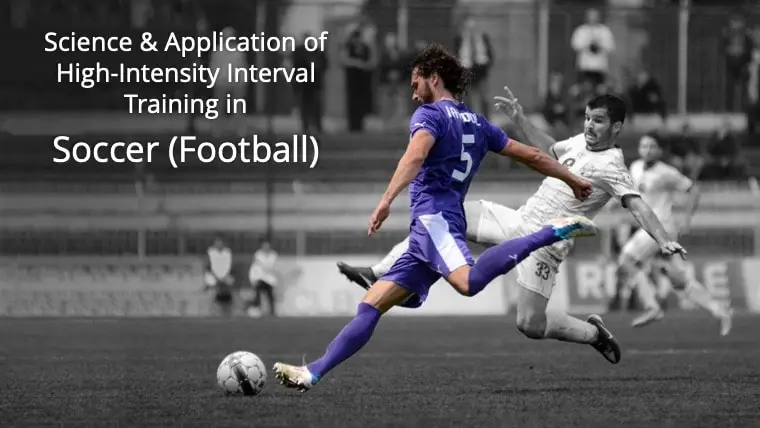Advances in Soccer Periodization: Maximizing Performance through Innovative Training
Soccer periodization represents a systematic framework for planning training, optimizing player performance, and ensuring peak readiness for competition.
As the world of soccer continues to evolve, so does our understanding of how best to prepare athletes for the physical demands of the game.
Historical Context of Soccer Periodization
Traditionally, soccer periodization followed a linear approach, focusing on specific training phases throughout the season.
Coaches would emphasize endurance and strength during the off-season, transitioning toward skill and tactical development as competitions approached.
Key milestones in the evolution of these methodologies include the incorporation of periodization models from other sports, which emphasize more dynamic and flexible training approaches, allowing for real-time adaptations to player needs.

The Role of High-Intensity Interval Training (HIIT)
High-Intensity Interval Training (HIIT) has gained significant traction in soccer training programs due to its proven efficacy in enhancing endurance, speed, and recovery times.
Research conducted by Martin Buchheit, a leading figure in the field of HIIT Science, highlights the relevance of incorporating HIIT into training regimens for European football.
These short bursts of maximum effort interspersed with recovery periods mimic the fluctuating intensity of a soccer match, thereby preparing athletes for the game’s demands.
Key Benefits of Football Periodization to Maximise Performance:
The benefits of HIIT are substantial; athletes experience improved cardiovascular capacity, greater anaerobic fitness, and faster recovery, all critical in a sport characterized by constant motion and high exertion levels.
Advances in Training Philosophy
With the ongoing shift toward more tailored training approaches, soccer coaching philosophies are transitioning from linear to nonlinear periodization.
Nonlinear soccer periodization allows for variations in training intensity and volume to accommodate individual player needs, while tactical periodization incorporates game strategy directly into training sessions.
Elite Club Examples
Elite soccer clubs, such as FC Barcelona and Manchester City, exemplify these advances, integrating tactical awareness with physical training.
For example, training may focus on specific game scenarios to improve decision-making under pressure, thus merging physical prowess with mental acuity.
Application of Technology in Soccer Periodization
The advent of wearable technology has transformed how coaches monitor player performance and physical condition.
Devices measuring heart rate, GPS tracking, and detailed biometric data enable coaches to have unprecedented insight into player workload and fatigue levels.
This data allows for the creation of individualized training plans, optimizing performance while minimizing injury risk.
For instance, clubs in European football have employed these technologies to fine-tune training sessions according to real-time data, ensuring athletes develop specific physical attributes required for their positions, from the speedy winger to the robust center-back.
Periodization and Adaptation to Game Demands
Aligning training cycles with match schedules is fundamental in soccer periodization.
Coaches must adjust training programs based on competition phases to ensure athletes peak at the right moments.
This adaptability also involves catering to specific player roles—strikers may focus more on agility and shooting drills, while defenders may prioritize strength and positioning.
By evaluating game calendars, training intensity can be manipulated effectively, leading to optimal performance during crucial matches.
Coaches must remain vigilant in adapting their approach as the season progresses, ensuring players are in prime condition when it matters most.
The Evidence-Based Soccer Periodization Framework
Based on Martin Buchheit’s landmark research on “The 11 Evidence-Informed and Inferred Principles of Microcycle Periodization in Elite Football,” here’s an updated periodization plan for soccer that reflects the latest evidence-based practices:
Core Structure: Three-Phase Microcycle Modern soccer periodization follows a structured three-phase microcycle: recovery, acquisition, and tapering, tailored to match schedules. This replaces traditional linear periodization with a more dynamic, match-driven approach.
The 11 Key Principles for Soccer Periodization
Principle 1: Load Dynamics and Content Periodization Training load follows a predictable pattern with the first couple of days post-match dedicated to recovery, followed by acquisition days marked by heavy load typically lasting two days, then lower intensity and volume days allowing players to taper before the next match.
Principle 2: Strategic Rest Day Placement Strategic rest day placement is particularly effective at D+2 to reduce injury rates within varying microcycle lengths. This timing allows for optimal recovery while maintaining substitute players’ training opportunities.
Principle 3: Post-Match Recovery and Compensation Post-match (MD+1) upper body training is compatible with recovery, and high-intensity and speed training compensation is needed to maintain substitutes’ performance and reduce injury risks.
Principle 4: Weekly Training Load Management Optimal training load ranges of 60-90% of match load, reached via football training, balance performance enhancement and injury mitigation. This provides clear guidelines for weekly training prescription.
Principle 5: Optimal Training Sequencing Modified microcycle planning and session sequencing (e.g., switching typical MD-3 vs MD-2) could improve training impact without affecting match-day readiness.
Principle 6: Maximum Speed Exposures Near-to-maximal speed training (>95%) at MD-2 may be associated with reduced injury rates. This challenges traditional approaches that avoid high-speed work close to matches.
Principle 7: Strength Training Integration Early scheduling of eccentric training, effective micro-dosing, and progressive intensity ensure optimal integration of gym-based work with field training.
Principle 8: Strategic Pre-Match Tapering A balance between moderate and light loads pre-match with increased focus on recovery optimizes performance and injury prevention.
Principle 9: Match Day Morning Activation MD morning priming sessions can enhance physical potential without affecting technical skills, providing a final preparation opportunity.
Principle 10: Running as Football’s Foundation Running is as fundamental to the game as breathing is to life, with running metrics serving as instrumental tools to design football training purposefully rather than separate fitness components.
Principle 11: Embracing the Chaos Navigating unpredictability in elite football requires adaptability to external factors and a structured, objective framework to effectively manage chaos beyond the pitch.
Practical Implementation
Critical Integration Requirement These principles are additive and not simply applied one after another; adjustments must be made to integrate them seamlessly.
For example, implementing speed exposure on D-2 must consider strength training on D-4 and high-speed running loads on surrounding days.
This evidence-based approach moves beyond traditional periodization models to embrace the complex, multi-factorial nature of elite soccer preparation, providing practitioners with research-backed guidelines for optimizing both performance and injury prevention.
Conclusion
The landscape of soccer periodization has evolved considerably, driven by groundbreaking research and technological advances. As coaches and players embrace these innovations, the importance of ongoing research and adaptation in training methodologies becomes increasingly clear.
Optimize your team’s performance and stay ahead of the game by implementing these cutting-edge periodization strategies in your training programs.







